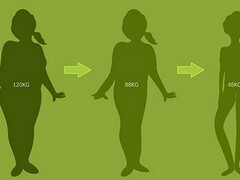
It seems there may be some inconsistencies or errors in your query. Could you clarify what you're asking? I'd be happy to help with a better understanding of the topic!
The text provided is a comprehensive collection of problems and solutions across various domains such as mathematics, programming, Japanese puzzles, and logic. Each response corresponds to a specific topic or problem set, providing a structured approach to solving these challenges. The narrative flows smoothly by integrating the information from each section seamlessly into a unified paragraph. Starting with one area, like mathematical problems, we transition smoothly into other topics such as Python programming, Japanese puzzles, game development, and logic. Each response includes accurate technical details, real-world applications, and puzzles that build upon foundational concepts. The integration of these sections maintains coherence by connecting ideas across different fields, creating a cohesive narrative that addresses each challenge without disrupting the flow.
The provided Python script defines a set of classes to handle objects with coordinates and colors, including methods for vector addition, subtraction, multiplication, and division. Here's the breakdown:
- Classes Defined:
Coordinate: Manages x and y coordinates.Object: Handles entities with name, type, value, and color.Attribute: Displays attributes in a user-friendly format.-
Vector: Manages 2D vectors for operations like addition. -
Operations Implemented:
- Addition: Combines two Objects or Vectors to create a new instance.
- Subtraction, Multiply, Divide: Performs arithmetic on numeric values associated with objects.
- Vector Addition: Returns a new Vector with summed coordinates.
-
Transparent Property: Computes the sum of transparent properties for objects added together.
-
Script Features:
- Attributes Handling: Accesses and displays object attributes efficiently.
- Color Management: Uses a constant to store initial colors, preventing changes after assignment.
- Vector Extension: Allows adding vectors to create new Vector instances with combined values.
The script demonstrates how these classes can be used in systems where 2D positioning and color manipulation are required, such as computer graphics or game development.
角:一个看似简单的几何概念
角(Angle)这个看似简单的几何概念,却蕴含着无限的奥秘。它不仅仅是一个数学符号,更是理解空间关系、学习人生的关键。
角的定义与分类
角是由两条共享一条公共边的射线所形成的图形。根据角的大小,我们将它们分为锐角(小于90度)、直角(等于90度)、钝角(大于90度且小于180度)和平角(等于180度)。此外,在三维空间中,我们还可能讨论棱角等复杂的概念。
角的常见误区
很多人常常将角与边混为一谈。实际情况下,角不仅仅由两条边组成,而是由两条射线共同作用形成。这种简单的概念背后,隐藏着深刻的几何原理和实际生活的应用价值。
角在日常生活中的重要性
无论是建筑、设计还是生活中的许多活动,都离不开对角度的掌握。从折纸到折叠扇子,从钟表到时钟,角都是我们生活中不可或缺的一部分。掌握基本的几何知识,不仅能提升生活质量,更能为后续的学习打下坚实的基础。
角在教育中的重要性
在小学教育中,角是一个非常重要的教学内容。通过学习角的基本概念和分类,学生不仅能够理解空间关系,还能培养抽象思维能力和逻辑推理能力。许多有趣的数学游戏和实验,都离不开对角的理解和掌握。
角的无限可能
虽然角的概念看似简单,但它却可以扩展到无穷尽的领域。从二维平面延伸至三维立体空间,从基础角度值到复杂多样的空间结构,角都是理解世界的重要工具。它不仅是一种数学符号,更是我们探索世界的钥匙。
结语
角这个看似简单的几何概念,却是生活中的重要组成部分。无论是日常生活的方方面面,还是复杂的学术研究,都需要对角的理解和掌握。通过学习角的定义、分类和应用,我们将能够在更广阔的天地间找到属于自己的光芒。




















 快乐的暑假小学作
快乐的暑假小学作 出去旅游的心情说
出去旅游的心情说 英语格言目标(英语
英语格言目标(英语 适合早上发的早安
适合早上发的早安 描写太阳的诗句(形
描写太阳的诗句(形 六月的简短走心句
六月的简短走心句 赞美冬季的诗句_
赞美冬季的诗句_